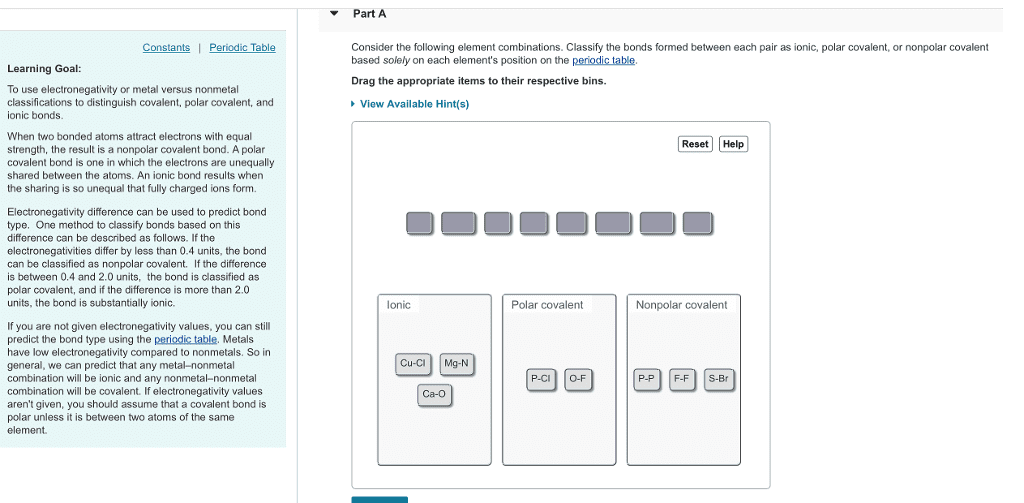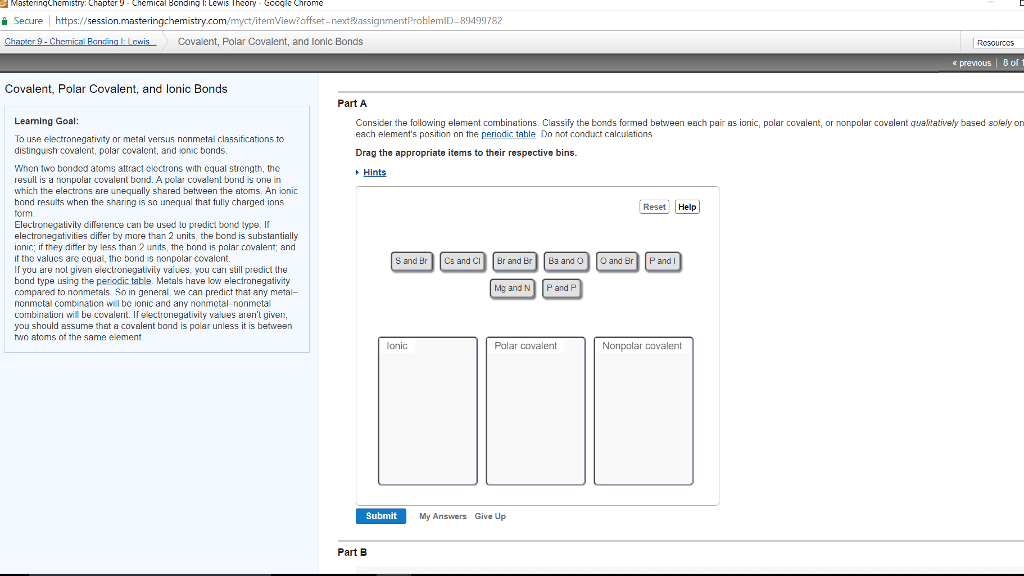CHM 1045 Chapter Notes - Chapter 6: Covalent Bond, Chemical Polarity, Atomic Radius
Document Summary
Top right is highest (fluorine) (also smallest atomic radius) The ability of atoms in a molecule to attract electrons to itself. Fluorine pulls more on electrons than hydrogen. Bond polarity- describes the sharing of electrons in a covalent bond. We indicate the polarity of molecules in two ways. The positive end (or pole) in a polar bond may be repsented with a delta + and the negative pole with a delta - We can also place an arrow over the line representing the bond (+->) Pure (non polar) covalent bond (electrons shared) 0-0. 4 electronegativity difference. Polar covalent bond (electrons shared unequally) 0. 4-2. 0. Quantitative masure of magnitude of the dipole (u thingy) Bond length is a the distance between the nuclei of the atoms in a bond. Generally, bond distances decrease as we move from single through double to triple bonds. Expand (row 3 or greater row) or reduce (atomic number 1-5) octet if minimize formal charge.



